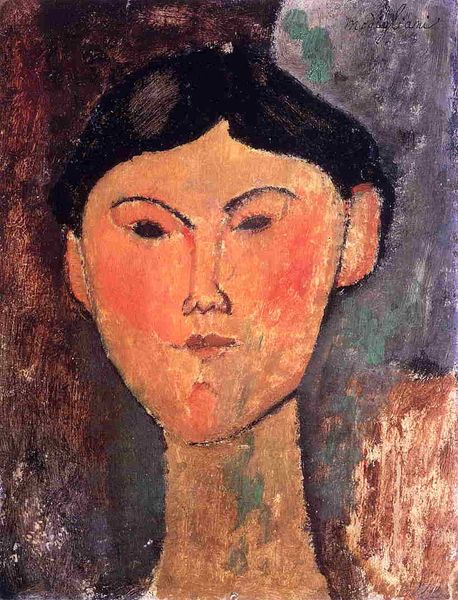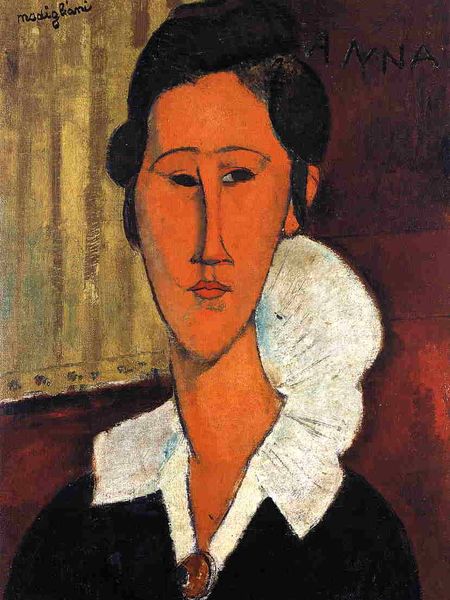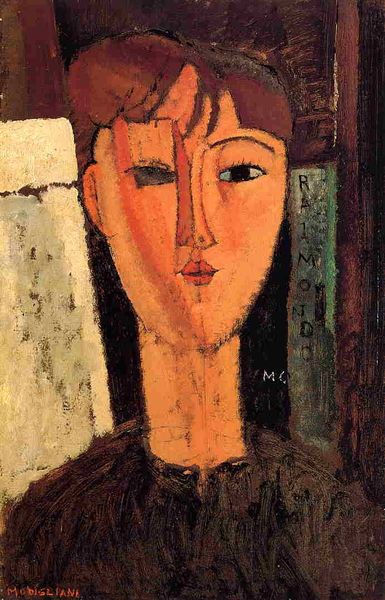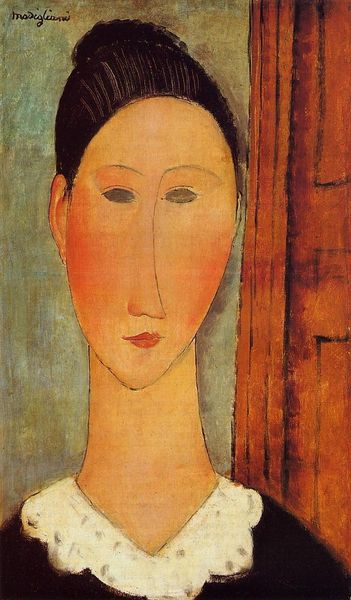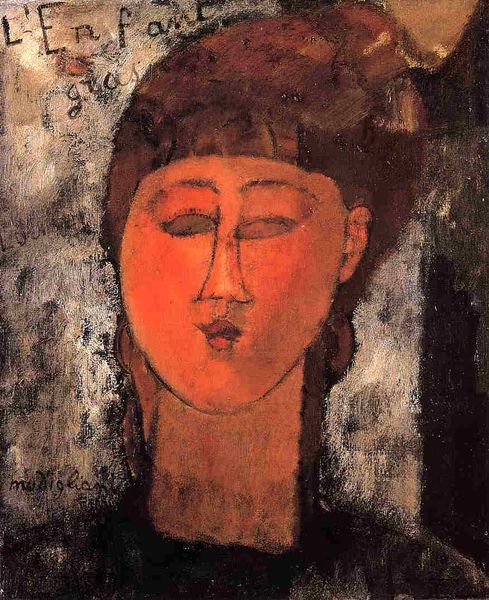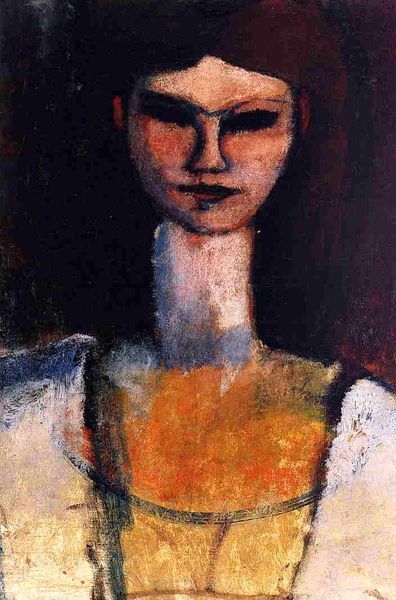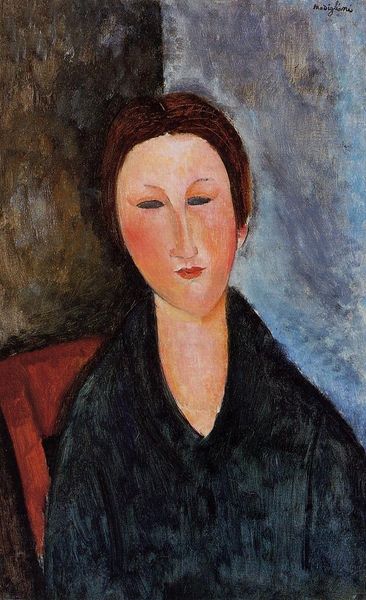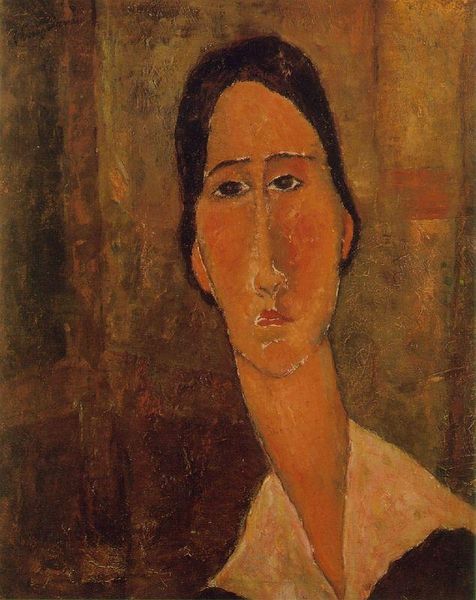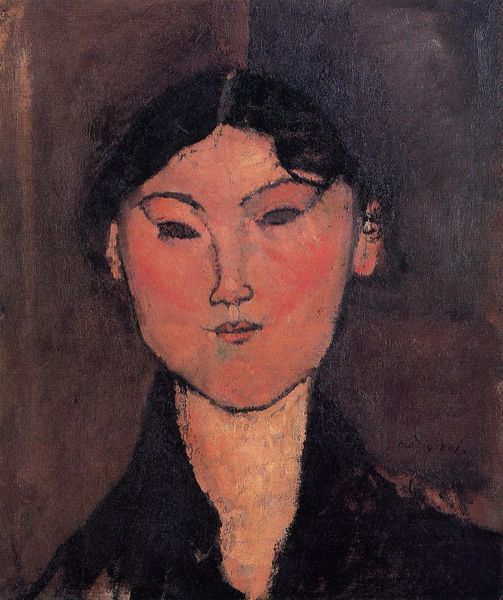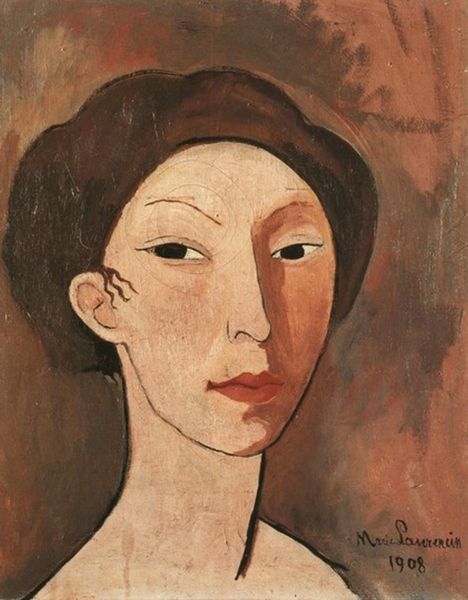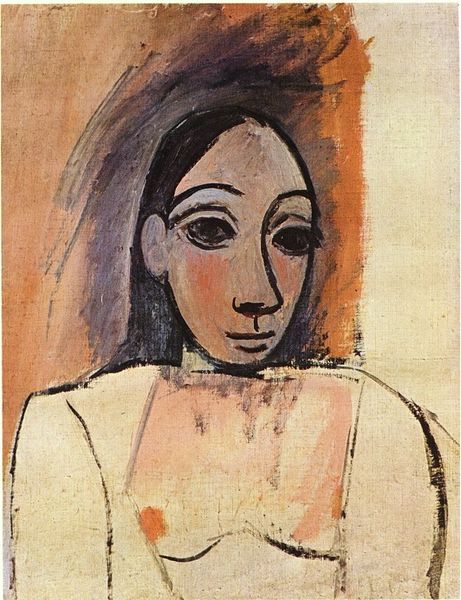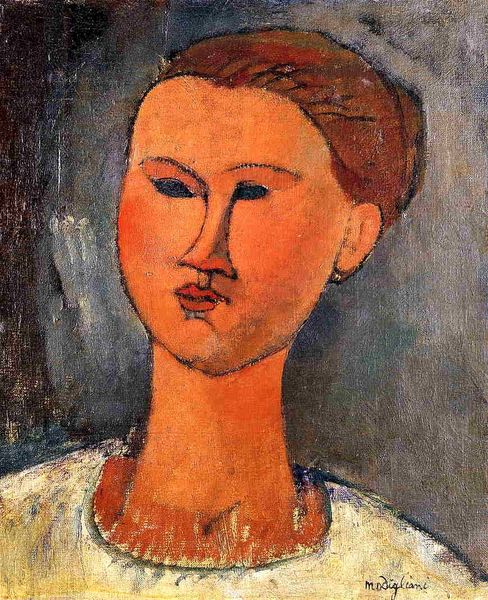
painting, oil-paint
#
portrait
#
painting
#
oil-paint
#
figuration
#
expressionism
#
modernism
Dimensions: 46 x 38 cm
Copyright: Public domain
Curator: This is "Woman's Head," an oil painting completed by Amedeo Modigliani in 1915. It currently resides here at the Palazzo Brera. Editor: It strikes me as almost unsettlingly serene. The face is so elongated, almost mask-like. What’s compelling, though, is how Modigliani manages to convey so much with such minimal detail. Curator: That's partly due to his engagement with the Parisian avant-garde and Primitivism during that period. His interest in non-Western art deeply impacted his method of production. Note the smooth, almost polished surface of the paint itself, almost like a sculpted piece. The emphasis isn't on surface texture like impasto, but rather on the careful layering and smoothing of oil to create a nearly flawless presentation of the face. Editor: Absolutely. He's definitely emphasizing form over realistic representation, which departs radically from academic tradition. And consider who got to be represented this way: how does his artistic circle inform the types of people he depicted? He isn’t making art in a vacuum, and it’s useful to wonder if he engaged with some of the popular politics and publications that advanced anti-Semitism, sexism, or colonialism. Curator: It's fascinating how Modigliani negotiates that tension between the raw materiality of his process – the stretched canvas, the pigments ground and mixed, the sheer labor of applying paint – and the almost ethereal quality of the finished portrait. One can ask where this material labor comes from. Who prepared these materials, and how does the creation process impact social perceptions surrounding artistic expression? Editor: The social context certainly plays a pivotal role in how we interpret this portrait. It was exhibited and circulated within specific artistic and commercial spheres that would shape its legacy. How did its placement in galleries, museums, and private collections contribute to Modigliani's rise in fame and influence, and whose stories were subsequently erased? Curator: Those questions definitely add layers to our experience of this particular artwork. Editor: They really do. I think that focusing on context as well as Modigliani's artistry is key to how the artwork impacts viewers today.
Comments
No comments
Be the first to comment and join the conversation on the ultimate creative platform.
